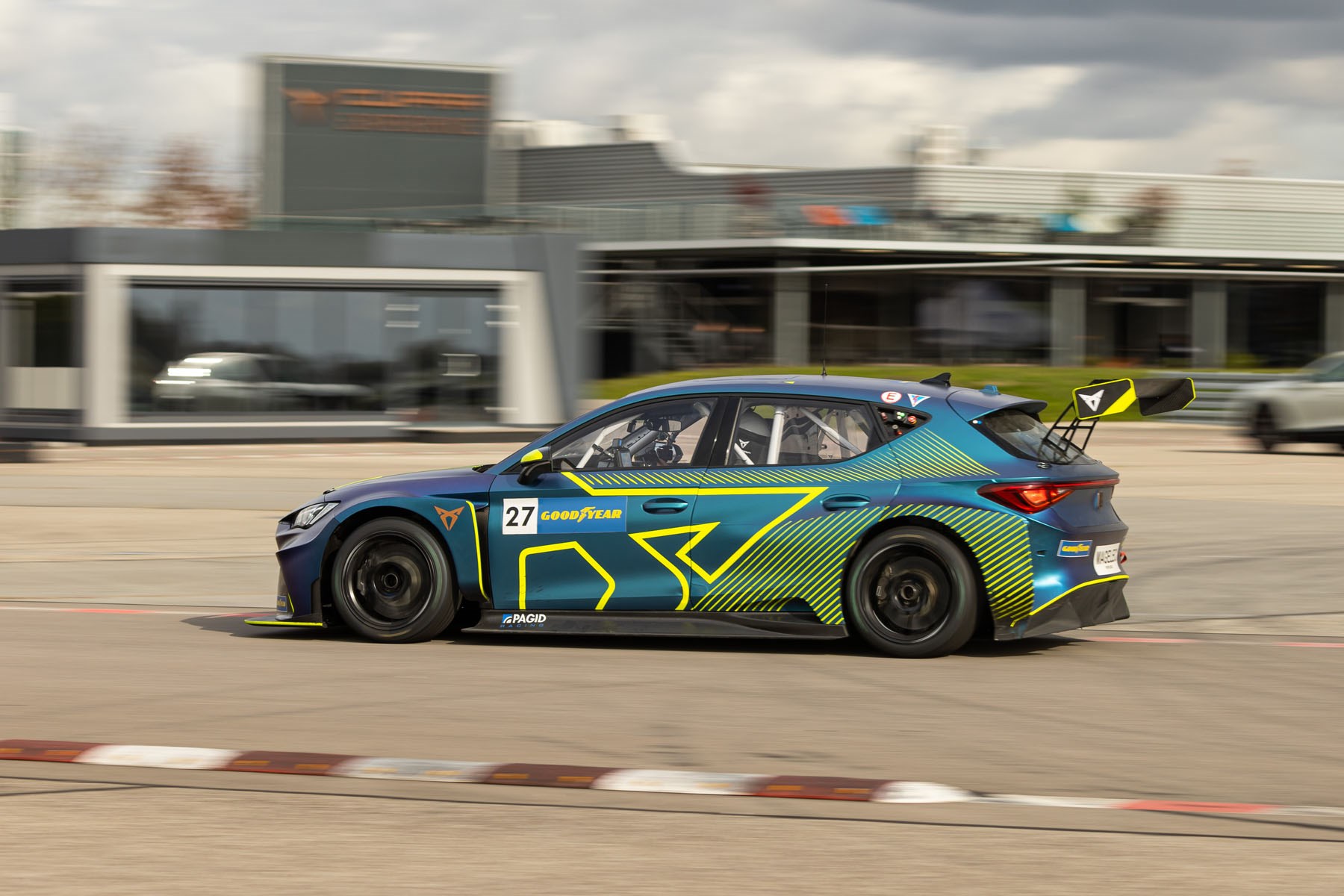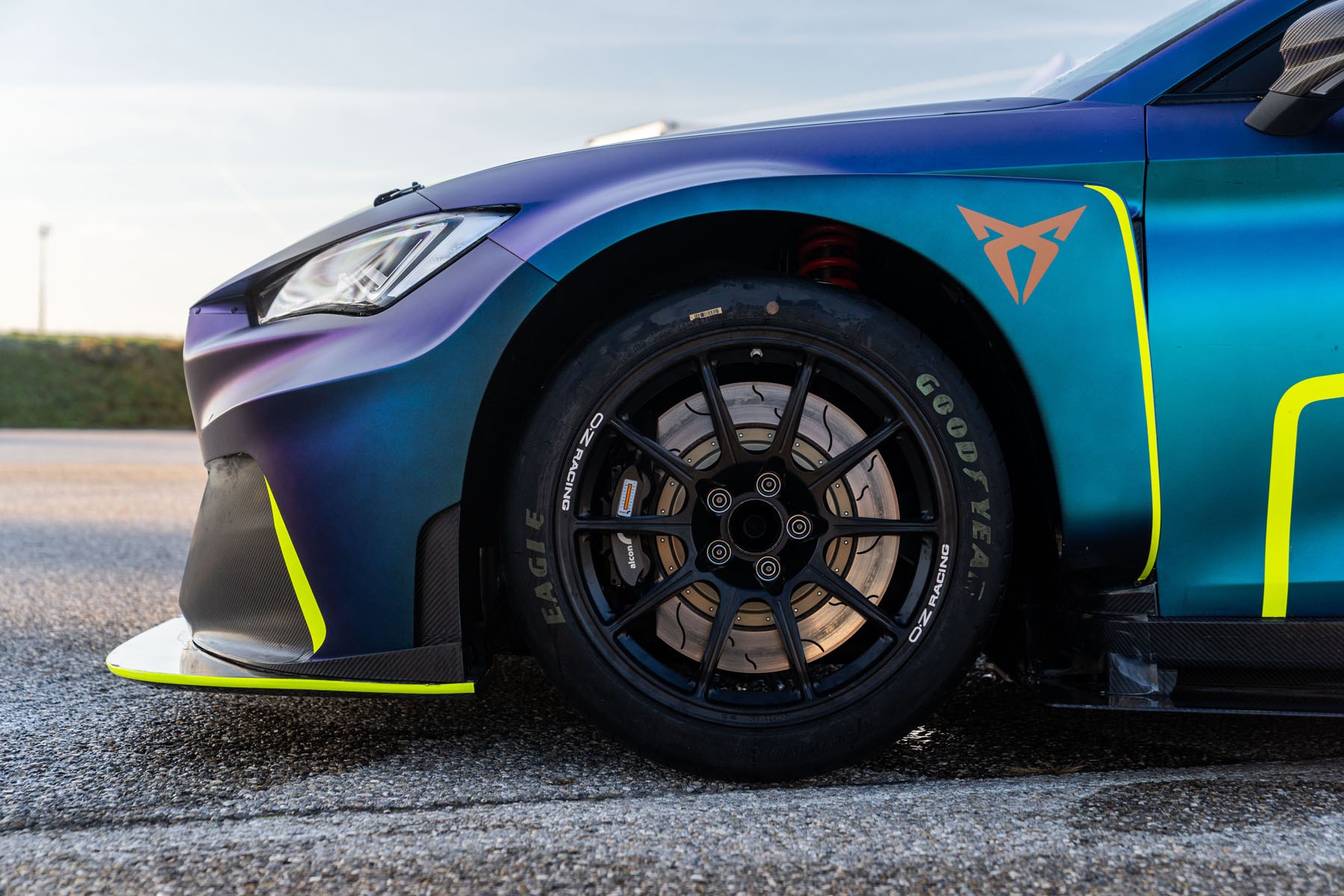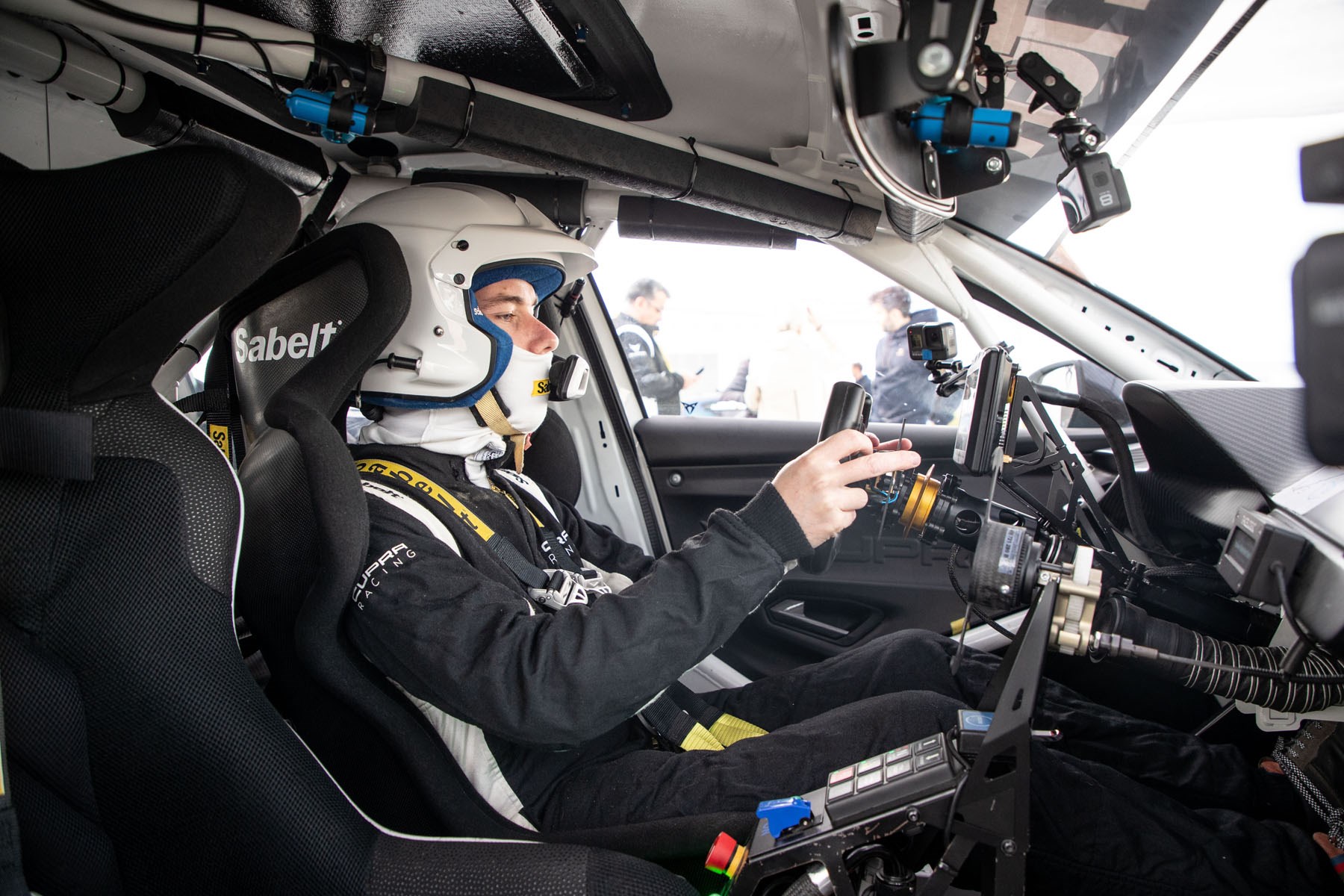► Cupra’s electric touring car driven
►670bhp, RWD, 0-62mph in 3.2 secs
► Is this the future of motorsport?
Over the last few years, Formula E and Extreme E have taken the spoils as the world’s premier EV series, yet neither have convincingly captured the imagination of existing motorsport fans. Enter, then, the eTouring Car World Championship – aka BTCC but with EVs and on an international scale.
It sounds like a promising idea given that touring cars can produce the kind of close racing most single seaters can only dream of, so to find out if it’s got legs, we got behind the wheel of Cupra’s championship-winning Leon e-Racer. Read on to find out we thought of it.
Is it fast?
Yes – like pretty much all EVs it’s got a boatload of power. Standard output for all ETCR entrants is 396bhp yet all cars come with a limited-use push-to-pass function that unlocks a total of 660bhp and 708lb ft of torque. That means 0-62mph in 3.2 seconds and a top-speed of 166mph.

Power from the 62kWh battery is sent to the rear wheels via a single-speed Williams Advanced Engineering powertrain, while total range is around 25 miles. Yep, you read that right – around half the official range of a G-Wiz. That said, most EVs (even ones with a 200-mile range) would probably empty their batteries in next to no time when driven full pelt around Hungaroring.
Thankfully, recharging is an eco-friendly process (no diesel generators in site, unlike some electric racing series) thanks to 60kW hydrogen chargers. Capable of topping up the car’s battery from 10% to 90% charge in around an hour, each team makes use of them multiple times during a race weekend.
A little complicated, but the short, numerous races have been designed to keep things fast and punchy (and within the capabilities of the cars’ batteries). Each race weekend, the 12 competitors are put into two pools of six (Pool Fast and Pool Furious), with subsequent one-lap qualifying battles, quarter finals, semis and a grand final taking place.
Every car is built to a control spec with many parts, such as the motors, transmission, inverter, battery, ECU and cooling system all staying constant. In addition, all cars must race at a minimum 1,800kg (the batteries are responsible for around 500kg) on all-weather Goodyear tyres (designed to reduce waste).

Suspension components, meanwhile, are McPherson strut at the front and double wishbone at the back, while electric torque vectoring on the rear axle varies the amount of torque sent to each wheel. Of course, there are some parts that individual teams can modify and adapt (Cupra designed their own aero, for example), while tweaks to the camber, spring rates, toe etc are all fair game.
In short, the regulations have been designed to keep the racing as close as possible while also allowing smart drivers and engineers to gain small advantages if they put in the time and money. There’s currently only three different cars in the series (CUPRA, Hyundai i30N and Alfa Romeo Giulia), but it’s hoped that more will join in future.
What’s it like to drive?
Climb in and it feels like a proper racing car. It might not have an engine, but things like the steering wheel, button panel and brake bias lever all suggest that this is a serious bit of kit. Start-up is quiet by motorsport standards, but noisy for an EV. Select drive using a button to your right, then simply squeeze the accelerator and go.
Admittedly, it feels weird being in such an environment and not having any gearshift paddles to pull, but you quickly become used to one ‘gear’ performance. We’re sticking to the regular 396bhp today and on our small test track it doesn’t feel hugely fast. Sure, it would destroy most petrol road cars in a 0-62mph race, but the speed feels mundane compared with a Tesla Model 3 Performance, for example.
You might think that obvious, but ICE racing cars often feel far quicker than their figures suggest, much of this down to things like the sheer noise, low kerb weight and aggressive engine map. In an EV, however, none of this really applies. There’s a real whine from the motor as it spools up and propels the car forward, but aside from that it’s very similar to road-going EV.

Thankfully, that changes as soon as you approach a corner. The brakes are blessed with power and feel, while the light steering has a purposeful, clean turn-in. At seven- or eight-tenths, this is a super easy car to drive but start to push it and you can see where the pros earn their money.
There’s traction control, but even when activated the CUPRA will spin its wheels, while ABS is absent altogether. Go into a corner too hot and it’s not afraid to show some serious rotation at the rear, while putting the power down effectively requires a deft foot. CUPRA’s drivers say that, in order to be really quick, you need to elicit a small but noticeable bit of angle without letting it get out of hand.
It’s a balancing act and one that feels harder thanks to the lack of a regular torque and power curve. Going for the throttle out of a corner, you naturally expect there to be a delay before the power really comes in – yet the reality is an instant hit that takes a finely tuned foot to control. The more laps you do, the more you want to try and squeeze more and more out of the car.
This writer is lucky to have driven a petrol British Touring Car Championship Honda Civic Type R and although the track and conditions were very different, there’s clear similarities and differences. In the case of the former, you’re very aware of the large body around you and how it doesn’t totally eradicate roll.
In both, you need to work with that in order to get the best out of the car, keeping things precise for a quick lap time. In contrast, the BTCC racer felt raw and unfiltered – a more physical experience with the noise and sequential box being highlights. If we had to pick, the ICE powered BTCC would get the nod for sheer driving experience, yet there’s no doubt that the eRacer also has the potential for high quality, close racing.
Verdict
Like all new motorsport series, the eTouring Car World Championship will no doubt need time to develop. On paper, it looks better suited to electric power than any rival EV series, plus backing from Cupra and Hyundai is a promising start. And from our brief drive in the Leon, it’s clear that there’s a serious racing car underneath that, crucially, has the potential to deliver enthralling racing in the same vein as its petrol counterparts.
No doubt, work needs to be done on the range of the cars and the format could put off potential new viewers due to its complexity, but the more immediate future of the series relies on how many teams can be tempted in. Big tracks such as Zolder and Hungaroring are appealing (and give the series the edge over the street circuits of Formula E), yet only having a handful of cars driving around at one time isn’t a good look. Fix that, and the era of electric motorsport might have its first winning formula.
